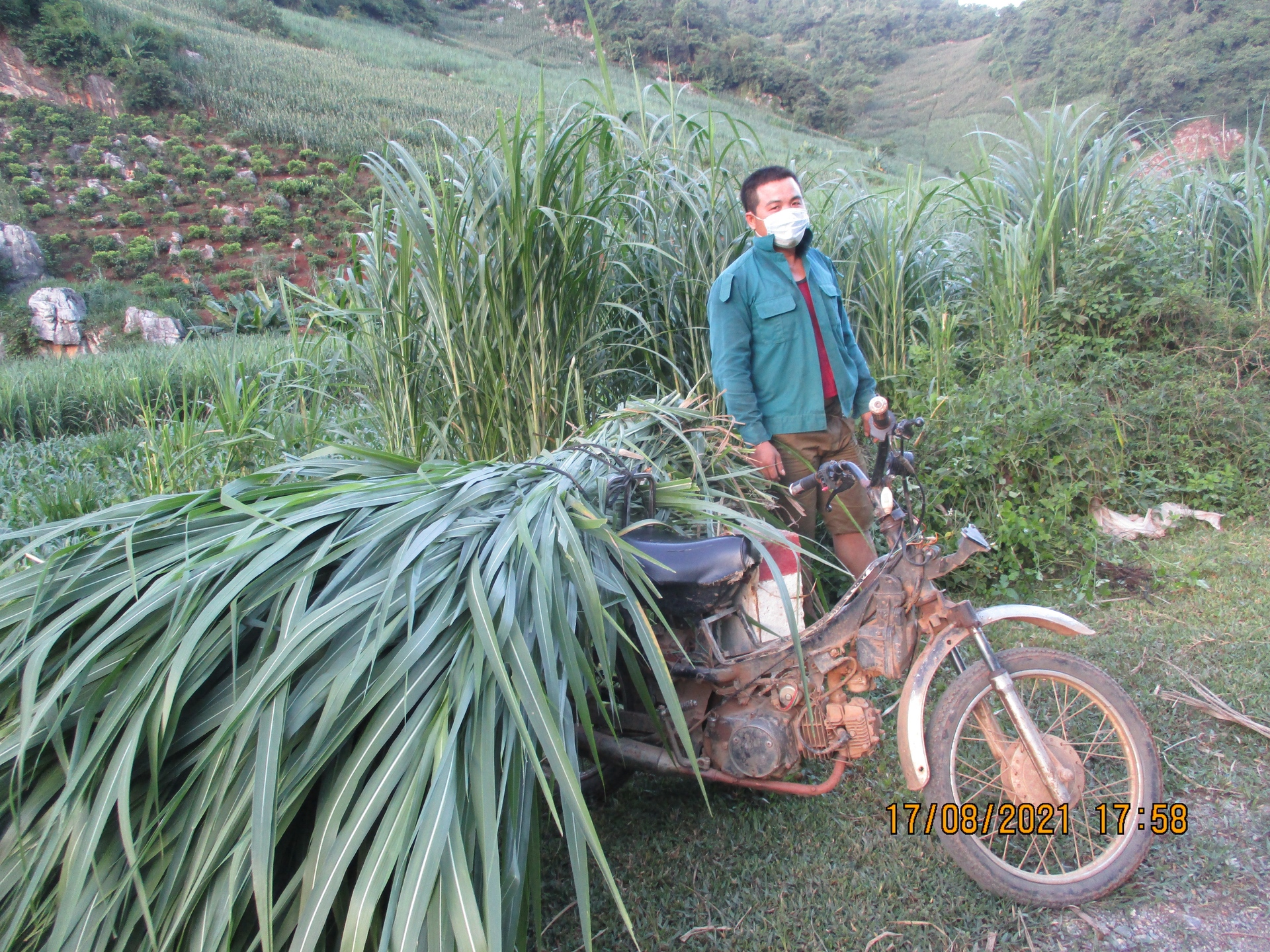
Phái from Mờn 1 village is cutting grass for buffaloes. Elephant grass has been planted in Mờn 1 village for more than 10 years. At first, the grass was used to feed fishes because the cattle were grazing in the forest. Then grazing was not allowed because the cattle damaged plants in the forest. They like eating bamboo shoots in the forest. Since 1997 and 1998, when the forest management was contracted, the forest owners have no longer been allowed to let their cattle graze.
Gradually, local people are becoming familiar with confining their cattle. Everyone grows elephant grass. Each household grows elephant grass on an area ranging from 200 to 500 square metres. Now the demand for grass is increasing. If the grass output is not enough for the cattle, the farmers replace sugarcane with grass.
The revenue from selling a buffalo or cow is 50–60 million dong (2,200–2,500 US dollars), higher than sugarcane farming and less hard work. A household may earn only 20–30 million dong (800–1,300 US dollars) from a whole year working on sugarcane. Since the start of the Li-chăn project, everyone wants to raise livestock. Being supported by the project on disease prevention and treatment, farmers feel more secure.
Confining animals is less hard for farmers. It requires one person’s labour to herd animals in the fields, while one working hour is needed to cut grass for confined animals. Leaving for grass cutting as early as 5 a.m. or 6 a.m., farmers can then go home to do other things afterwards.
Narrator and photographer: Lường Thị Thân (Thai ethnicity, 26 years old)